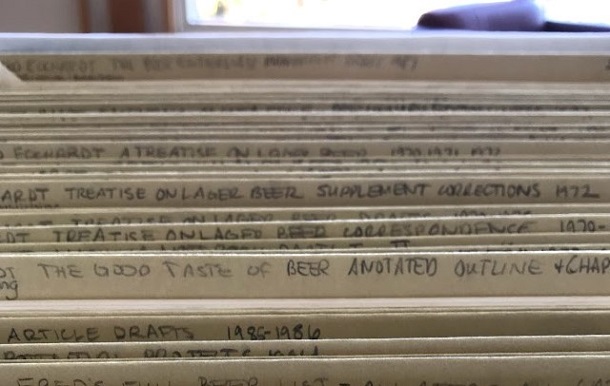 A box of Fred Eckhardt’s papers at the Oregon Hops and Brewing Archives.
A box of Fred Eckhardt’s papers at the Oregon Hops and Brewing Archives.
7 years ago I started a #beer archive and it delights me that the #beerhistory field has grown so much since then! Learn more about the collections at https://t.co/Ko80O1mG2q and https://t.co/0hUBEzaw2R pic.twitter.com/BQtAIE4cvh
— OHBA (@brewingarchives) August 1, 2020
I would not know Tumblr still exists if it weren’t home to the Oregon Hops and Brewing Archives blog. It seems that’s just one more way it is a link to the past.
As Tiah Edmunson-Morton wrote in her tweet this past weekend, the #beerhistory field has grown impressively since she started OHBA seven years ago.
I wrote about her and the archives for DRAFT magazine two years into the run. (You can find the story here, but be aware the site is no longer secure.)
Edmunson-Morton has been running ahead of the crowd from the start, already practicing what Paul Eisloeffel of the Nebraska State Historical Society called holistic collecting, “thinking outside of the archives box” and gathering artifacts as well as historical documents. This doesn’t necessarily come naturally.
“Dealing with artifacts has always been a problem for standalone archives,” he said. He’s a proponent of the sort of proactive collecting Edmunson-Morton undertook. “It is important for archivists to be able to look at what’s happening in a culture and start collecting now. I really applaud her.”
In “But What If We’re Wrong” author Chuck Klosterman writes, “It’s impossible to understand the world of today until today has become tomorrow.” It’s also impossible if somebody is not saving the important stuff to begin with.
